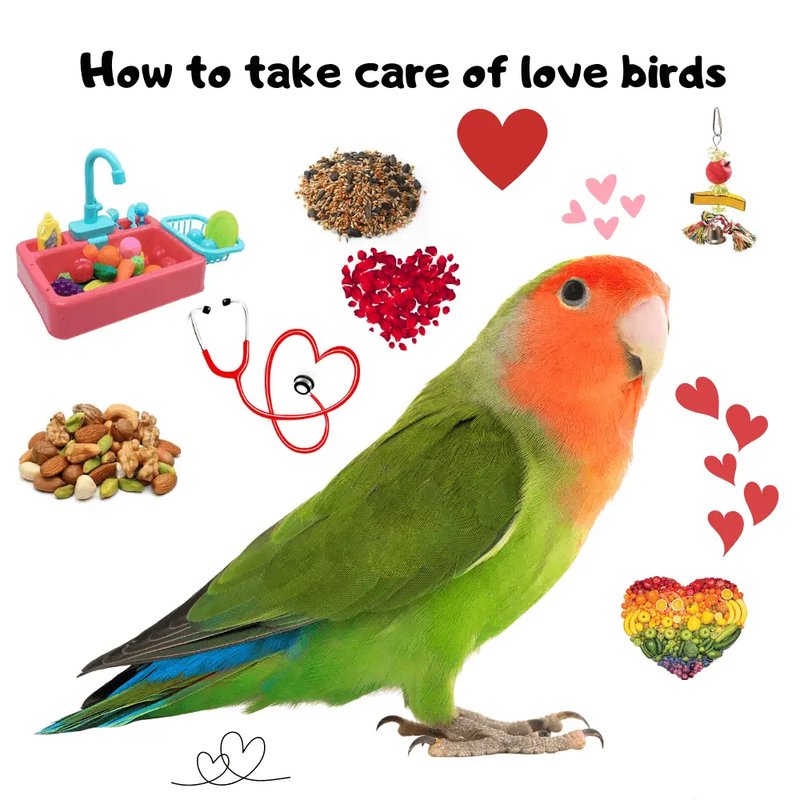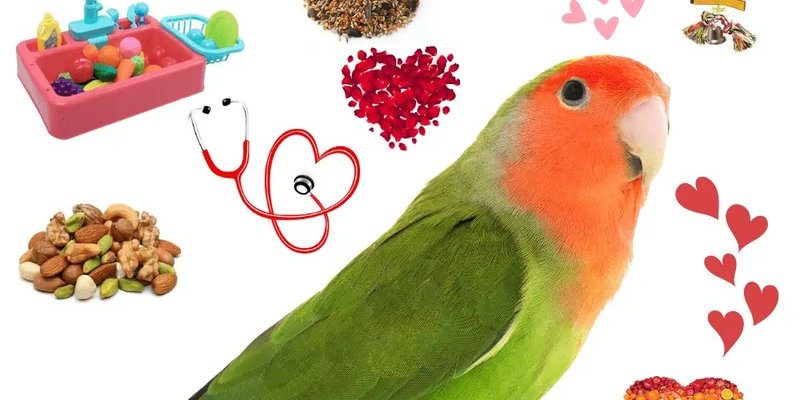
Now, caring for a lovebird isn’t just about putting seeds in a bowl and calling it a day. It’s a bit like being on a rollercoaster; there are ups and downs, but if you buckle up and learn the ins and outs, it can be an exciting ride! In this beginner’s guide, we’ll dive into everything you need to know— from their diet and habitat to their social needs and health care. So, grab a cup of coffee, and let’s explore how to keep your lovebird chirping happily!
Understanding Your Lovebird’s Needs
When you first bring home a lovebird, it’s essential to understand their basic needs. These birds are social creatures, meaning they thrive on interaction—not just with their fellow feathered friends, but also with their human companions. They’re curious and need plenty of mental stimulation to keep them happy. Imagine being stuck in a room with nothing to look at or do; it wouldn’t be fun, right? That’s how your lovebird might feel without proper engagement.
Let’s break down the essential elements of lovebird care:
- Social Interaction: Lovebirds are flock animals, so they need companionship. Spending time with them daily is crucial. Talk to them, play with them, and let them out of their cage for socializing.
- Mental Stimulation: Provide toys, puzzles, and things to chew on. Rotate their toys regularly to keep their environment fresh and exciting.
- Exercise: Lovebirds need to stretch their wings. Ensure you have a safe space for them to fly around, as this keeps them physically fit and mentally stimulated.
Keeping these needs in mind will help you create a loving environment for your feathered friend!
Choosing the Right Cage
Selecting a cage for your lovebird is one of the most important steps in pet ownership. Imagine living in a cramped space—it’s likely you’d feel a bit grumpy! That’s why your lovebird deserves a spacious, comfortable home. The right cage should allow them to fly, perch, and play freely.
What should you look for in a lovebird cage? Here are a few pointers:
- Size: A minimum size of 24″ x 24″ x 36″ is ideal, but bigger is always better. This gives them room to flap their wings and exercise.
- Bar Spacing: Ensure the bars are spaced no more than ½ inch apart to prevent escapes or injuries. Lovebirds are small but surprisingly slippery!
- Material: Choose a cage made from safe, non-toxic materials. Stainless steel or powder-coated metal is a good choice, avoiding anything painted that could chip away.
When you set up the cage, include perches at different heights and provide toys at various levels to engage your lovebird and keep life interesting.
Feeding Your Lovebird the Right Way
Here’s the thing: a proper diet is vital for your lovebird’s health. Think of food as the fuel that keeps their engine running. Lovebirds are seed eaters by nature, but a seed-only diet can lead to nutritional deficiencies. Instead, aim for a balanced diet.
Here’s what to include:
- Pellets: A high-quality pellet mix should make up about 60-70% of their diet. Pellets are formulated to provide balanced nutrition.
- Seeds: Treats like small amounts of seeds can be given, but don’t let them fill up on these! Think of seeds as dessert—enjoyed in moderation.
- Fresh Fruits and Vegetables: Offer a variety of fresh produce daily. Things like apples, carrots, and spinach are great options. This is like the salad bar for your lovebird—full of fun flavors and textures!
Remember to wash all fresh foods well to remove any pesticides or dirt. Changing food daily helps keep it fresh and encourages your lovebird to try new things.
Socializing and Bonding with Your Lovebird
You’ll find that one of the most rewarding parts of owning a lovebird is building a bond with them. They can be incredibly affectionate and enjoy the company of their human friends. But how do you get there? It’s all about patience and consistency.
Start by spending short, quality time with your lovebird each day. Here are a few tips:
- Consistent Handling: Gently handle your lovebird daily to build trust. Start with short sessions and gradually increase the length as they become comfortable.
- Positive Reinforcement: Use treats to reward good behavior. When your lovebird steps onto your hand or interacts with you, a little treat can reinforce that behavior.
- Talk to Them: Engage your lovebird with your voice. They love to listen, and who knows? They might surprise you with some words of their own later on!
Developing a strong bond can take time, but the love and trust you’ll build will be well worth it.
Health Care and Regular Check-Ups
Just like any pet, lovebirds can experience health issues, so it’s essential to keep an eye on their well-being. Regular vet visits can catch problems early, ensuring your feathered friend stays healthy and happy. Honestly, think of it like taking your car in for maintenance—you want to catch any issues before they become major problems!
Here’s how you can keep your lovebird in tip-top shape:
- Watch for Symptoms: Keep an eye out for changes in behavior, appetite, or droppings. If your lovebird seems lethargic or has ruffled feathers, it might be time for a vet visit.
- Beak and Nail Care: Ensure their beak and nails are trimmed regularly. Overgrown beaks or nails can lead to problems, just like us needing haircuts every once in a while!
- Annual Check-Ups: Schedule yearly vet visits for overall health assessments. Regular check-ups can provide peace of mind and keep your lovebird thriving.
Understanding their health can help ensure you provide the best care possible for your lovebird.
Creating a Safe Environment
Safety is paramount when it comes to pet care. You might have heard stories of pets getting into trouble, and lovebirds are no exception. They’re curious, which means they may explore areas that could be dangerous. Let me explain how to create a safe haven for them.
Start by checking your home for potentially hazardous items:
- Toxic Plants: Many common houseplants are toxic to birds. Carefully research which plants are safe and remove any dangerous ones from your living space.
- Open Windows and Doors: Always supervise your lovebird when you let them out of their cage. An open window could spell disaster if they get too curious!
- Electrical Cords and Small Objects: Keep cords and small objects out of reach. Birds love to chew, and some materials can cause serious harm if ingested.
By taking these precautions, you’ll create a safe space where your lovebird can explore without fear.
Caring for a lovebird is a rewarding experience filled with love, laughter, and plenty of chirps! By understanding their social needs, providing a suitable cage, feeding them a balanced diet, and ensuring regular health check-ups, you can create a happy home for your little friend.
Remember, the journey of bird ownership is a learning curve. Don’t hesitate to reach out to avian specialists or connect with other lovebird owners for advice and support. With time, patience, and love, you’ll find that your bond with your lovebird grows deeper each day. Happy bird-keeping!

